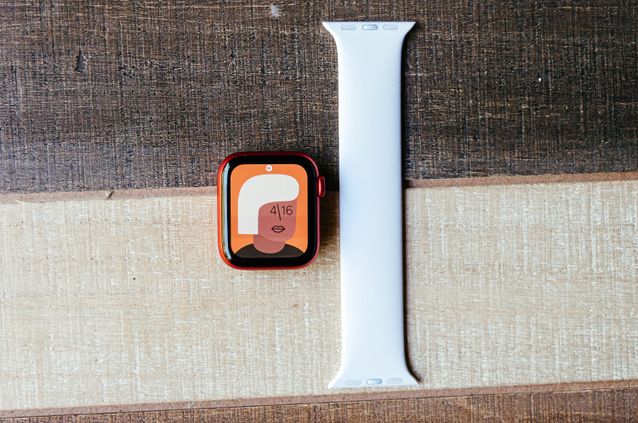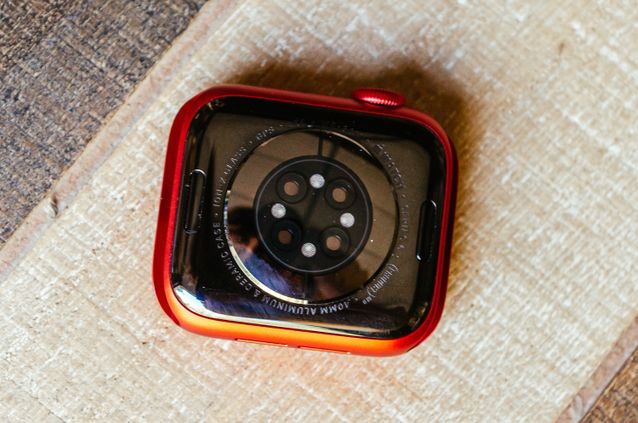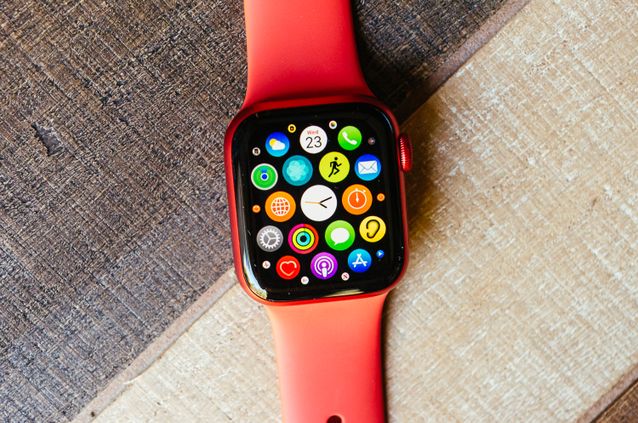Technology
More health data, but less to do with it
Updated processor • Includes SPO2 sensor for blood oxygen level readings • Always-on altimeter • Accurate fitness tracking • Impressive battery life • Tracks sleep with watchOS 7 • Faster charging speeds
Sleep and SPO2 metrics aren’t in-depth • Incremental update from its predecessor
The Apple Watch Series 6 is a very capable smartwatch in terms of health and fitness tracking, but the addition of an SPO2 sensor has yet to add much value for everyone that uses it.
Before Apple stole all the attention with the introduction of its Apple Watch back in 2014, smartwatches were more of a sideshow curiosity for the average consumer, rather than a practical gadget. But Apple didn’t have that issue because its focus was clear: This was an iPhone for your wrist. Since then, the Apple Watch has evolved into a health and wellness device. And the new Apple Watch Series 6, with its built-in SPO2 sensor to measure blood oxygen levels, is proof.
Considering the company’s track record with the Apple Watch, the Series 6, with its incremental changes, feels a bit underwhelming by comparison. This is particularly because Apple has continuously pushed boundaries with each successive Watch refresh: The Series 2 featured built-in GPS; the Series 3 introduced LTE connectivity; the Series 4 came with an ECG sensor; and the Series 5 added an always-on display (while still retaining the same battery life).
With the inclusion of the SPO2 sensor, however, Apple is simply playing catch-up to its smartwatch rivals. While necessary, it’s not all that revolutionary considering brands like Garmin, Polar, and even Fitbit have come equipped with the same sensor for years now. Those brands also incorporate your blood oxygen levels into your overall health score each day, making it easier to understand the current state your body is in. But with the feature still very much in its early stages for the Apple Watch, simply seeing the range of your blood oxygen levels isn’t all that useful yet — unless you suffer from serious health conditions where the ability to always keep an eye on your levels is crucial.
The headlines around this new feature have also managed to completely overshadow the Watch Series 6’s biggest flaw: It’s simply a replica of the Series 5 with an SPO2 sensor and new processor thrown in. The Series 6 carries over all the same features from its predecessor, including an always-on display, ECG sensor, fall detection, high/low heart-rate notifications, Emergency SOS, and more.
If you don’t want to take my word for it, head over to Apple’s site, click on the Series 6, scroll down, manually, select “Compare all models” once and then again on the next window (I know, Apple clearly made this difficult for a reason). Once you’re finally there, you’ll see that both specs tables are practically identical apart from the aforementioned sensor and processor. It’s further proof that updates to the Series 6 are slightly underwhelming this year, and the addition of the SPO2 sensor truly isn’t that big of a deal… yet.
That signature Apple Watch design … yet again
If you couldn’t already tell, the look of the Series 6 has been left unchanged since the Series 4. As usual, you’ll have the choice between a GPS model and a cellular version, if you’d rather not be tethered to your phone.

The same OLED display, but this time it’s a little brighter.
Image: brenda stolyar / mashable
Of course, you’ll have to pay extra for that LTE connectivity. While the GPS model starts at $399, the GPS and cellular model increases the price from $499 to over $1,000, depending on the style you choose. And that’s without the additional fee you’ll pay per month for a separate carrier data plan.
The Series 6 comes in two case sizes: 40mm and 44mm. I’d recommend the latter size if you have bigger wrists, but the 40mm version fit my baby wrists just fine. As for case material, the LTE model is available in aluminum, stainless steel, and titanium. The GPS model, however, is only available in aluminum.
Each case comes with a pre-selected band, ranging from the classic Sport Band to the Leather Link band, Milanese Loop, and more. But using Apple Watch Studio (introduced last year with the Series 5), you can mix and match any bands you want regardless of the case you choose (unless you’re going for the Nike or Hermes versions).

I will only use the Solo Loop Band for the rest of time.
Image: brenda stolyar / mashable
While the Watch’s style remains the same, Apple did throw two new color options into the mix: Product Red and Navy Blue. As you can tell from the photos, I had the aluminum Product Red version which certainly makes a statement on the wrist. But, as I mentioned in my hands-on with the Watch, I’d rather go with a neutral color like silver or gold since it’s easier to match with my outfits on a daily basis.
Apple also introduced a new Solo Loop band that’s free of any clasps or buckles. It comes in both a silicone version and a braided option. While choosing which size you need is a bit of a pain (since Apple requires you to take a few extra steps to figure it out), it’s worth it. Having the ability to quickly slide the Watch onto my wrist — without having to take the extra time to find the right notch or adjust the fit — is enough for me to justify buying all the colors without any regrets.

See? The same look and almost all the same specs. Clearly, Apple doesn’t want you to see this.
Image: screenshot / apple
The Watch Series 6 has a 1.57-inch always-on OLED display that’s 2.5x brighter than the last-generation model. But I truly could not tell that much of the difference even when in bright sunlight.
There’s also an always-on altimeter that you can set as a watch face complication (that’s a fancy way of saying info displayed on the watch face). Using the barometric altimeter and GPS, the Series 6 can track your elevation in real-time or, in layman’s terms, the amount of flights you’ve climbed. Seeing this metric update in real-time is likely a lot more useful for those of you who go hiking or climbing. But you will never catch me doing either of those things, so I can’t say I found any use for the feature.

Another Apple Watch, another ECG sensor…
Image: brenda stolyar / mashable

The Series 6 has a few extra sensors on its back.
Image: brenda stolyar / mashable
On the right side of the Watch Series 6, you’ll find the digital crown (which doubles as an ECG sensor), along with a side button, and microphone. On the left is a speaker, which can be used for phone calls and audible replies from Siri. The bottom of the Series 6 houses all the sensors including the heart-rate monitor and infrared LEDs for the SPO2 sensor on the back crystal.
Even though I’ll always complain about the chunkiness that is the Apple Watch case, I’ll still give it to Apple for retaining the same size as the Series 5 even with the addition of a new sensor. That said, I do hope a thinner Apple Watch is on its way sooner rather than later.
Standard performance, surprisingly impressive battery life
In addition to the SPO2 sensor, the only other major upgrade to the Series 6 is the new S6 chipset, which uses a dual-core processor that’s based on the A13 Bionic processor found in the iPhone 11. Apple claims it runs up to 20 percent faster than its predecessor.
Having used both the Series 5 and Series 6, I found it tough to really tell a difference in performance. Sure, the Series 6 runs smoothly when navigating the Watch or opening apps; there’s no lag when I’m scrolling through metrics or notifications. But it’s nothing to rave about, especially considering this is the sort of standard performance I expect from a smartwatch that costs as much as it does.
The Series 6 maintains the same 18-hour battery life as its predecessors — and that’s with watchOS 7 sleep tracking. In fact, I was pleasantly surprised with how long the Watch was able to last.

Okay, I was very impressed with battery life on the Series 6.
Image: brenda stolyar / mashable
Typically, I found the Series 6 would last me about 16 hours each day, and that’s with always-on display mode and notifications enabled, as well as blood oxygen readings being taken in the background. So, while it doesn’t last for days like its competitors, I can confirm that it does last for as long as Apple claims it does even with all those features working at once.
You will, however, need to charge it before bed if you intend to use its sleep tracking feature.
Yes, the Series 6 is accurate when tracking metrics
The Series 6 is very accurate at tracking metrics on a daily basis, but particularly during workouts. In addition to its inbuilt SPO2 sensor and heart-rate monitor, it also packs a barometer, always-on altimeter, accelerometer, gyroscope, and compass.
To test the accuracy of its heart-rate monitoring and distance tracking, I went on four separate runs wearing the Watch Series 6, a Polar H10 heart-rate monitor, and the Fitbit Sense smartwatch. It’s worth noting the Sense has issues tracking heart rate, so I only relied on it to compare distance.

The Series 6 tracks both heart rate and distance very accurately.
Image: brenda stolyar / mashable
During each run, the Apple Watch was only off by about one or two beats per minute (BPM) as compared to Polar’s monitor. After each run, I also compared average BPM and found the same differences. As for distance, the Series 6 and the Sense were only off from one another by about .02 to .03 miles.
Since the both the Sense and the Apple Watch come with SPO2 sensors, I also tested the accuracy of blood oxygen level readings — both of which were within one to two percent of each other. Unlike with the Sense, which only tracks SPO2 readings overnight, the Series 6 runs in the background at all times, but allows you to manually check your levels.

You have to sit very, very still to take these blood-oxygen readings.
Image: brenda stolyar / mashable
The process is simple: Open the SPO2 app on the Watch and rest your wrist for 15 seconds while it reads your levels. After that, you’ll see a percentage appear on the screen with your results. I’m not sure if it’s me in particular, but the Watch would often say the “measurement was unsuccessful” even when I wasn’t moving at all.
The metrics are synced to the Health app where you can see all your past readings under the Heart category. Again, even though the SPO2 sensor doesn’t have FDA clearance, it’s still useful to keep track of in case you want to show your results to your doctor.
But I also never really had any reason to take these measurements other than for the sole purpose of testing the feature for this review. Of course, that’s not to diminish the importance of having the sensor built-in — monitoring your blood oxygen levels can help detect sleep disorders like sleep apnea or atrial fibrillation (AFib). But hopefully, with time, Apple will find a way to incorporate these metrics in a way that means something to the average user.
All about watchOS 7 …
The Series 6 ships with watchOS 7, Apple’s latest operating system for its Apple Watches, which is compatible with the Series 3 and above. While it comes with a fairly long list of features, there were only a handful that I found useful for my day-to-day.
Sleep Tracking
It’s felt like a very long time coming, but the Apple Watch can finally track sleep. The feature is super simple to use: Set your specific bed time on the Watch (or Health app) and it will automatically go into Sleep Mode at that exact time each night (which is similar to Do Not Disturb). In the morning, you’ll be able to see the total amount of hours you slept and your heart rate throughout the night. While it’s tough to measure the accuracy of sleep tracking, I can confirm that it was able to correctly identify when I fell asleep and woke up. My one complaint, however, is that it doesn’t give you in-depth information like when you’re in REM, deep, or light sleep cycles.

Finally, sleep tracking on the Apple Watch
Image: brenda stolyar / mashable
Hand-washing detection
I am the most neurotic person on the planet, so this pandemic hasn’t been the best for my germaphobic tendencies. But watchOS 7’s hand-washing detection helps to ease my anxieties a bit. The feature is triggered automatically when the Watch’s mic picks up on the sound of soap suds and running water on your hands. It then immediately starts a 20-second timer (a.k.a. the CDC’s recommended amount) and notifies you when done. This feature not only gives me peace of mind, but it also beats having to recite the ABC’s twice over in my head each time.
Tracking cooldown
This is a very minor feature, but warm-ups and cooldowns are just as important to track as your actual workouts. So it’s nice that Apple has added it as an exercise option. It allows you to track your heart rate and calories to then incorporate into your overall metrics.
Noise app
The noise app was originally introduced with watchOS 6. It measures ambient noise levels around you to determine whether they’re at a safe level. With watchOS 7, Apple expanded the feature to earbuds or headphones when you’re using the iPhone or Apple Watch. If your environment is too loud, you’ll receive an alert to let you know. Since I wear my AirPods and stream music from my Apple Watch during my workouts, and have a tendency to blast my music, it’s nice to be able to keep track of how healthy the sound levels are at all times.
Again, watchOS 7 comes with a slew of other features, but the ones listed above are those that I gravitated towards the most during my time with the Series 6.
The verdict

Maybe the Series 7 will be even more useful.
Image: brenda stolyar / mashable
Look, the Apple Watch Series 6 is an excellent smartwatch. It has a premium design that’s loaded with tons of sensors. It tracks fitness and health metrics accurately, offers over a full day’s worth of battery life, and has a wide selection of third-party compatible apps. Throw in watchOS 7 and you’re now finally able to track sleep among other new features.
But unless ECG readings and blood oxygen levels are crucial to track for your overall health, you’re better off going with the Apple Watch SE. And, if you currently own an Apple Watch (particularly the Series 4 and 5), it’s not worth the upgrade — at all.
If anything, the introduction of the new SPO2 sensor is simply the start of Apple building on its new features for its next-generation smartwatch. Over time, we’ll hopefully be able to get more actionable info from those blood-oxygen readings apart from a simple percentage letting us know whether or not we’re within a healthy range.
Now that the Apple Watch is tracking a multitude of metrics, including ECG, blood oxygen, and sleep, it’s time for the company to figure out a way to make that data meaningful to the average consumer.
Here’s hoping Apple takes some bigger risks with the Series 7 next year.
-
Politics6 days ago
Facebook oversight board debuts, but no decisions before Election Day
-
 Technology7 days ago
Technology7 days agoInstagram, YouTube, and more (UK deal)
-
Technology5 days ago
PayPal terminates account of Epik, home to Proud Boys domain and Gab
-
Entertainment7 days ago
How Netflix’s “Rebecca” ending is different from the book
-
Featured3 days ago
Over in minutes: Special Boat Service’s ‘textbook’ raid shows why they have fearsome reputation | UK News
-
Entertainment5 days ago
Everything coming to HBO Max in November 2020
-
Politics3 days ago
Facebook planning ahead for potential unrest on Election day: report
-
Entertainment5 days ago
Everything coming to Hulu in November 2020


